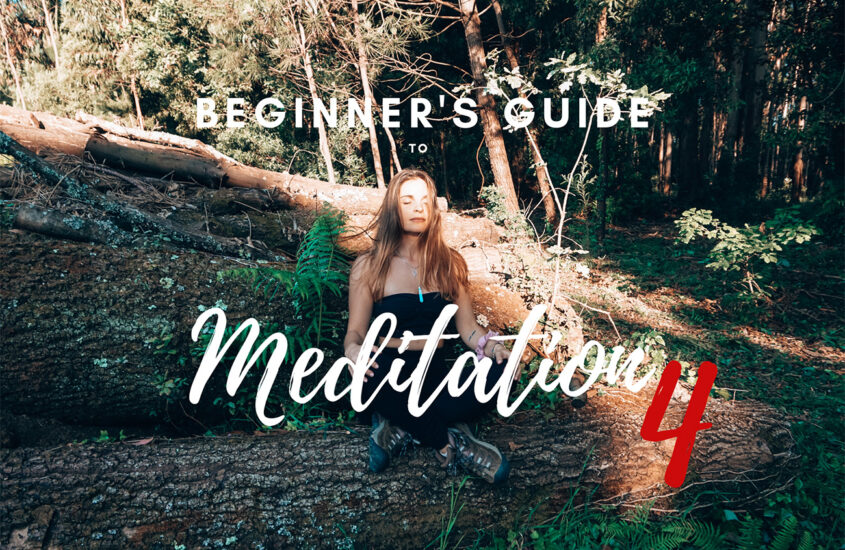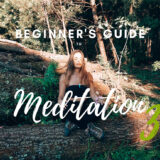Beginner’s Guide to Meditation 4: Meditation into Practice


With this article, I conclude the “Meditation Guide for Beginners”, and nothing better than putting meditation into practice to integrate all the acquired learning. If you read the previous articles:
You will have by now deconstructed some ideas that you might have about meditation. You understand what meditation is all about, you have become aware of the two minds that we have and how important it is to be aware of them.
Likewise, you learned about some benefits of continuous meditation practice can give you and how it can improve your life at all levels. Finally, we explored some ideas that can help you build a strong mindset to commit to this journey of self-knowledge.
Today, I’m going to give you two very simple meditation processes (which don’t mean they’re easy) to put your meditation into practice. They were the same ones I used when I started practicing and they helped me stay focused and calm down the mind at the beginning. I advise you to try both and to understand which one works best for you.
MEDITATION INTO PRACTICE
PROCESS 1
- Set an alarm for your meditation time, as you will surely want to stop before the time you set for yourself.
- Look for a quiet place where you know you won’t be interrupted, get a pillow, and sit on the floor or on the bed. Sit on the end of the pillow with your legs crossed and your column straight and in this position try to get comfortable. The hands can be supported on the knees or on your lap, with the right hand overlapping the left hand with the palms facing up.
- Relax your body. You can close your eyes or not. I like to practice meditation with my eyes closed because I can concentrate more easily, but you need to find what works better for you.
- Relax. Take three deep breaths, inhaling the air and filling your entire chest and belly, then exhale slowly feeling your chest and belly empty. As you take these three deep breaths, begin to empty your mind and bring awareness to the present moment through your body, through the flow of your breath.
- After these three deep breaths, let the breath flow normally without trying to control it or without giving it a rhythm. And you start counting to 10.
- Breath in. One. Feel the air flow entering your body through your nostrils and down your throat, chest, and all the way down. Breath Out. One. Feel the path that air takes out of your body, point by point. Breath in. Two. Breath out. Two. And it goes on until you count to 10.
- When a thought comes to your mind you start counting from the beginning. In the beginning, the thoughts will come up several times (remember that it is normal and do not be discouraged) and sometimes you will only realize that you are already involved with thought after a few seconds, as soon as you become aware of that bring your awareness to your count and breathing.
PROCESS 2
The process 2 is exactly the same method that I explained in process 1 but without the counting. Instead of controlling the focus of your attention by counting your breaths, you will remain fully aware of your body. That is, observing the most subtle sensations that exist from the tip of your head to the tip of your feet and as soon as you realize that thought are arising, you return to the starting point, which will be the top of your head or the tip of your feet.
This second process is not so shared for beginners because the counting process becomes easier to stay focused because it works as a mantra. However, this second process was the one that worked the best for me and because of that I decided to share it with you. There are people who will find it easier to keep focused on a “mantra” and others with the sensations of the body.
Try to do both of them and analyze with which one you can be more conscious about the arising thoughts, with which of them you can better take root in the present moment.
ONE STEP AT A TIME
No judgment! Do not be upset that many thoughts are arising and start thinking that you are not good at meditating. There is no such thing as good or bad here. Just notice the thought, observe that it is there and return to the beginning of the counting or to your body presence.
Probably at the beginning you will not be able to go even two minutes without a thought coming to you, for certain people it takes months to achieve and everything is fine because each person has their time.
The beginning was very challenging for me, I live with my head in the clouds and daydreaming, so it took me some time until I managed to reach this place of calm and peace when the mind is silent. However, I have already made incredible progress and I know that with constant practice I will be able to reach even higher levels of mental concentration.
Believe me, if I did it, you can do it too!
HOW LONG SHOULD I MEDITATE?
Starting from the principle that you are a beginner, that you are a person who has never meditated in life, I suggest you start with 5 minutes. Just five minutes every day. Use the alarm. Commit yourself to that time. Don’t give up, it’s just 5 minutes of your life.
If you have already meditated a few times, or for example, you have done the meditation with the counting and managed to reach 10 breaths without a thought cross your mind, I advise you at least 15 minutes.
WHY 15 MINUTES?
Because during meditation you will go through 3 distinct phases:
- PHASE 1 – In the first moments you will be interested in the process because you are starting a new thing, so you will be able to maintain a certain concentration and focus;
- PHASE 2 – What we can call “disinterest” appears, thoughts will be more frequent and sometimes you even forget that you are there to meditate. You try to bring your intention to meditation for 4 or 5 minutes longer;
- PHASE 3 – Mental activity decreases again and you start to slow down and the longer you can stay in this state the better because you start to enter into a state of meditation;
So when you meditate for 15 or 20 minutes, you have the opportunity to go through these three stages and give yourself time to reach a deeper meditation state. Eventually, you will notice this happening to you and naturally, you will want to increase your meditation time, because when you enter the third phase it is very good 😂
MEDITATION APPS
We are at a time in life when there are Apps for everything, isn’t it? So we do have Apps that we can use to meditate.
I use the App mainly for the alarm since you can set the meditation time and you can create secondary alarms within the total time. That is, if I meditate for 30 minutes, I like to set an alarm at 15 minutes to realize that I am going half the time and prevent my mind from wandering for how much time is left to finish.
Another advantage is that this kind of App offers you several bells sounds for the alarm and believe me that ending a meditation with a Tibetan bell is a thousand times better than ending with the cell phone alarm.
In addition, these Apps also offer you various themes with sounds of nature and relaxing music. However, I will always advise you on the sounds of nature, of course, if you are meditating in the middle of it you do not need these reproductions for anything. However, if you are in a city and there is no silence, they are a good help.
I use INSIGHT TIMER which has several free tools, many alarm sounds to choose from and also has several guided meditations to discover if you are interested on it.
FINAL CONSIDERATIONS
Meditation in practice means discovering the various layers of your Being, one after the other, and in no hurry to reach a destination. So be honest with yourself and focus on your path and not on the experiences of others because we are all different, we have different times and each person has their own unique path.
It is funny to think that it is our own mind that creates the obstacles to not meditating or to give up of something that we really want to do. Our mind is like a child, and to work with it we have to be patient and gradually work on ourselves.
The most important thing is to stay focused on wanting to know ourselves a little more every day, to start opening our consciousness, and to start our awakening. The world urgently needs this, and the collective awakening begins in each of us.
I hope this guide has been useful in some way. I am very happy to have the opportunity to share this knowledge with you! Feel free to contact me for questions or shares, I am very happy to be able to help you if it is within my knowledge 😊
Now that you’ve learned about meditation into practice, it’s time to really try it out. Let’s do it?
Much love. Namaste 🙏











